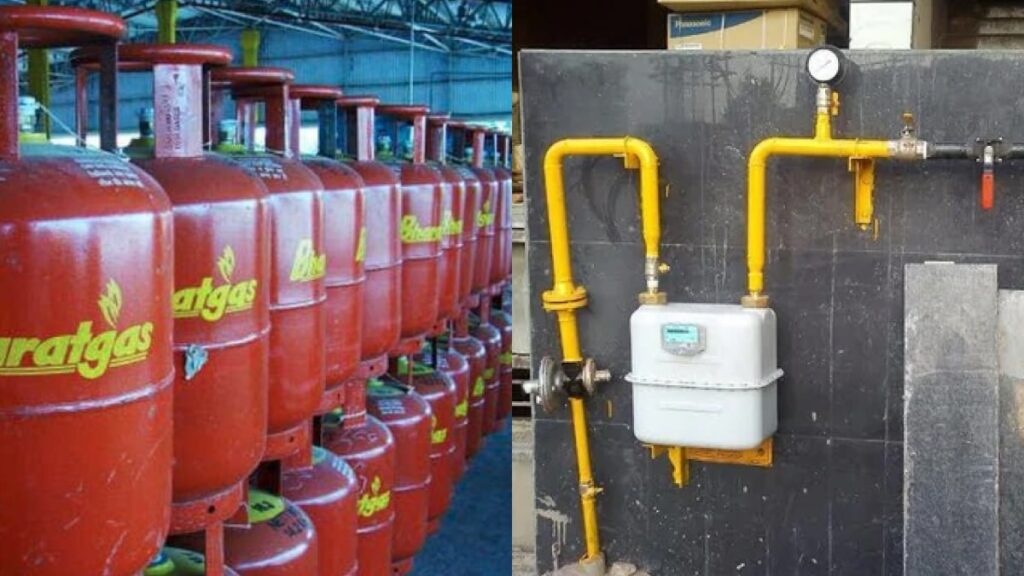As the world moves on towards being more environmentally conscious and the urgent need to reduce greenhouse gas emissions alternative fuels have become more promising. Liquefied Petroleum Gas (LPG) and Compressed Natural gas (CNG) have gained attention as they are cleaner and more sustainable for powering appliances and vehicles. In this article, we will discuss the key difference between LPG and CNG.
Definitions and Composition of LPG and CNG
Liquefied Petroleum Gas (LPG) is an abbreviation for Liquefied Petroleum Gas. It is composed of propane (C3H8) or butane (C4H10) or a mixture of both. LPG is sourced from the refining of crude oil or natural gas processing and is stored in a liquid state under moderate pressure.
Compressed Natural Gas (CNG) is an abbreviation for Compressed Natural Gas. It is primarily composed of methane, a hydrocarbon gas found naturally in underground reserves. Methane with its molecular formula CH4 is known for its lower carbon content and low emissions making CNG an environmentally friendly alternative to traditional petrol and diesel.
Comparative Cost Factors
CNG offers a significant advantage over LPG due to its abundant availability as a byproduct of natural gas production. Because the major concern for consumers and industries is the economic aspect. CNG is generally more cost-effective than LPG. This cost difference can make CNG the preferable option for public transportation fleets and industrial vehicles.
Calorific Value Comparison
Calorific value refers to the amount of heat energy produced by the complete combustion of a fuel. Although CNG has economic benefits, LPG has a clear advantage when it comes to calorific value. LPG has higher energy content that results in more energy being released during combustion, making it a more efficient fuel.
Environmental Impact
LPG and CNG are considered more environmentally friendly than traditional fossil fuels like petrol and diesel. However, CNG has a slight edge over LPG in terms of emissions due to Methane being the primary component of CNG which has a lower carbon-to-hydrogen ratio compared to propane in LPG. Methane is a potent greenhouse gas and any unburned or leaked methane can contribute to global warming. On the other hand, LPG is one of the cleanest fossil fuels mankind ever knew.
Storage and Transportation
One critical aspect that sets CNG and LPG apart is the storage and transportation methods. CNG is stored in high-pressure cylinders, usually made of composite materials or steel, which can be heavy and require more space. However, advancements in materials have led to the development of lightweight and durable cylinders, making CNG storage more manageable. Transportation of CNG often requires dedicated pipelines, which can limit its accessibility in some regions.
On the other hand, LPG is stored in liquid form under moderate pressure, allowing for more fuel to be stored in smaller containers. This makes LPG more suitable for residential and small-scale applications. LPG can also be transported through pipelines, but it is more commonly distributed in cylinders and tankers, which provides greater flexibility in reaching various locations.
Safety Considerations
Both CNG and LPG are considered safe fuels when handled properly, but each has specific safety considerations. CNG is lighter than air and, in case of a leak, will disperse quickly, reducing the risk of fire. However, CNG has a narrow range of flammability, meaning it can only ignite when the gas-to-air ratio falls within a specific range. This makes accidental ignition less likely but also requires specialized safety measures to prevent fueling accidents.
LPG, being heavier than air, can accumulate in low-lying areas if leaked, increasing the risk of fire or explosion. Nonetheless, its wide flammability range makes ignition more likely than with CNG. Therefore, proper storage and handling practices, along with safety mechanisms, are crucial for both fuels to ensure their safe usage.
Conclusion
Compressed Natural Gas (CNG) and Liquefied Petroleum Gas (LPG) both are promising alternative fuels that offer cleaner and more sustainable for different usages. While CNG is more cost-effective, LPG stands out with higher calorific value and versatile storage capability.
The decision between LPG and CNG depends on various factors like application, infrastructure, availability, and environmental concerns. Both LPG and CNG play essential roles in the usage of fuels that contributes to a better future.





